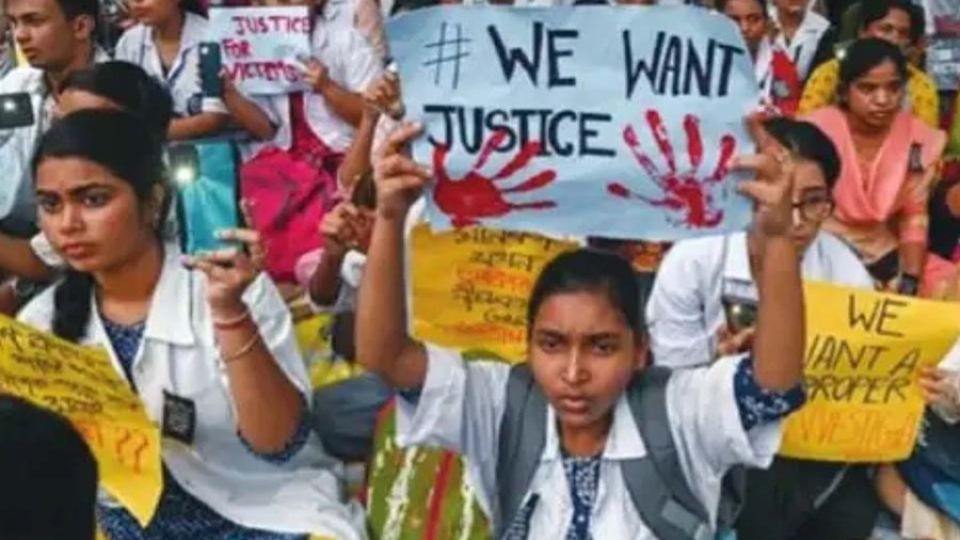October 15, 2024
NEW DELHI – At a time when the country’s political landscape has left successive generations disillusioned, eroding faith in the principles of fairness and justice, the “Never-Seen-Before Youthquake” in Kolkata stands as a beacon of hope.
The gruesome incident at RG Kar Medical College and Hospital served as the tipping point, unmasking the deep-rooted nexus of politicians, officials, and antisocial forces. In response, a new generation is rising, asserting its voice with unwavering resolve across Kolkata and beyond, demanding accountability and change.
The unrelenting protests led by the community of junior doctors, strongly supported by various sections of society including the differently-abled and senior citizens reflect a powerful collective desire to dismantle the entrenched political structures that uphold the unjust systems they stand to inherit.
These protests signify a refusal to accept a legacy of unfairness, marking the rise of a movement determined to reshape the future with integrity and fairness. Primarily, the youth-led protests continued for several weeks, drawing widespread attention both nationally and globally. Eloquent, principled, and resolute, the protesters’ actions and demands were beyond reproach.
In a striking display of creativity and courage, the protesting doctors held aloft the symbolic emblems of their movement plastic replicas of the human spine, human brain, and brooms embodying the fearless, selfless spirit of a cause destined to be remembered as a defining chapter in the history of speaking truth to power and challenging the illusion of invulnerability maintained by those ensconced in their self-perceived ivory towers.
In a rare display of collective concern and unity, Kolkata witnessed truly heartwarming scenes: poor daily wage earners and rickshaw pullers joining the protest, roadside tea vendors offering free tea, small eatery owners providing food at no charge, delivery personnel from food service apps distributing bottled water, and ordinary citizens including septuagenarians bringing provisions from distant places to support the protesting junior doctors.
Kolkata reminded the entire country, and perhaps the world, that even in an era dominated by the attention economy and transactional exchanges, there are still those who genuinely uphold the values of shared humanity and solidarity.
The unique strength of the protest lies in its ability to push the political class to the periphery, rendering them almost irrelevant a remarkable achievement in a state that has long been politically charged yet largely insensitive and anesthetized. If the populace had been more aware and engaged, the Left Front would not have maintained power for 34 years, nor would the Trinamool Congress continue to hold sway.
Now, a rising consciousness across society has ignited widespread outrage against those entrusted with governance, those who have either enabled or directly participated in institutionalized corruption and misconduct, allowing it to flourish in an organized and systemic manner.
This widespread frustration is not merely a reaction to the brutal rape and murder of a young doctor but an enduring and deep-seated anger that persists in defiance of the prevailing political malaise.
Until just a few weeks ago, the Trinamool Congress’s grip on power in West Bengal seemed unquestionable, unshakable, and undeniable. Youth-led protests have long been a powerful catalyst for social change, and the scale of the demonstrations in Kolkata and beyond is a powerful reminder that the youth serve as the conscience of the nation.
What sets these protests apart is their apolitical stance, illustrating that regardless of how firmly a government may seem entrenched in power, movements grounded in just causes can reveal even the most resilient regimes as surprisingly vulnerable, as recent events have clearly shown. People everywhere are anxiously awaiting the outcome.
Given the history of questionable investigations, the entrenched methods of the system, and the clear lack of political will, it is increasingly evident that public inquiries alone are insufficient.
Their outcomes frequently veer off course, resulting in endless cycles of blameshifting that enable politicians, perpetrators, and regulators to evade accountability. The country has witnessed how these delays often serve a hidden agenda to diffuse guilt, shift blame beyond reach, and allow the responsible parties to disappear from view.
Yet, as always, there remains a glimmer of hope that this time, justice will be delivered swiftly measured in days, not years.
Like any crisis, the current protests present an opportunity amidst pervasive poor governance: a chance to grasp the extent of the decay that has infiltrated every facet of society, to acknowledge and address the genuine concerns and earnestness of the people, and to recognize the urgency of embracing our collective responsibility as citizens.
Looking towards the future, our social awareness must strengthen, as the weaker it is, the more fertile the ground becomes for the political class to evade accountability. We must look within, confront our own deficiencies, and hold a mirror to the areas where we fall short.
The government’s mandate is clear: tackle corruption head-on, uphold fairness, and dismantle the pervasive nexus at every level.
However, achieving these goals will require more than mere rhetoric; it demands genuine, sustained action and accountability. Finally, to our junior doctors, we extend a salute for enduring the scorching sun and torrential rain, standing resolute in their commitment – a powerful lesson for us all, rooted in principles we seldom acknowledge or appreciate.
This lesson transcends generations, cultures, and geographical sites of resistance.


